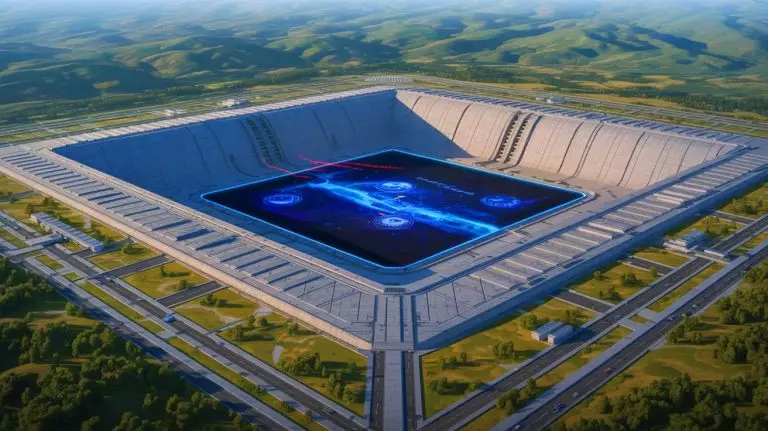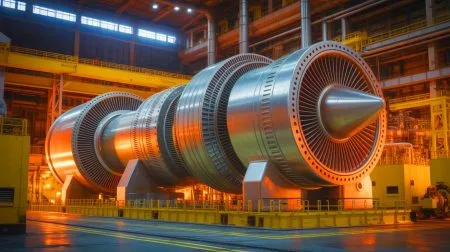| IN A NUTSHELL |
|
In the complex theater of international geopolitics, China has once again taken center stage with the unveiling of an ambitious military project that has captured the world’s attention. Recent satellite images have exposed the construction of what is believed to be the largest underground military command center near Beijing. This development is a bold statement of China’s strategic intentions and its readiness to challenge the United States’ dominance on the global stage. As experts and analysts scrutinize this audacious move, the ripple effects are being felt across Asia and beyond, prompting a re-evaluation of security strategies and defense postures worldwide.
China’s Ambitious Military Vision
China’s latest military endeavor underscores its expansive vision and long-term strategic goals. Drawing inspiration from Cold War-era tactics, China is constructing an underground command center designed to withstand the most severe threats. This strategy echoes historical precedents where nations like the Soviet Union invested heavily in subterranean fortifications during heightened periods of tension. Today, however, China is pushing the boundaries of this concept, aiming to create a facility that surpasses anything seen before.
The sheer scale of this project is indicative of China’s commitment to safeguard its military assets against potential adversaries. With geopolitical tensions simmering, particularly in the Asia-Pacific region, the construction of such a facility highlights China’s proactive approach to defense. This project not only reinforces China’s military capabilities but also underscores a shift in defense strategies that prioritize technological advancement and strategic preparedness as key elements of national security.
Implications for Global Security
The ramifications of China’s underground military complex extend beyond its borders, reshaping the global security landscape. As China bolsters its military infrastructure, other nations are compelled to reassess their defense strategies. This development signifies a potential recalibration of power dynamics not only in Asia but globally. The strategic weight of this project is immense, as it could redefine military alliances and prompt a rethinking of defense priorities worldwide.
In response to China’s actions, other major powers may feel the need to enhance their military capabilities. The United States, in particular, might consider reinforcing its presence in the Asia-Pacific to counterbalance China’s expanding influence. This scenario could potentially reignite an arms race reminiscent of the Cold War, raising critical questions about the future of international relations and the prospects for either conflict or cooperation in addressing shared security concerns.
Technological Sophistication and Strategic Depth
Central to China’s military project is an emphasis on technological innovation and strategic depth. The underground command center is anticipated to integrate cutting-edge technologies, including sophisticated communication systems and advanced defense mechanisms. This focus on technological prowess signals China’s ambition to ascend as a leading military power, capable of matching the capabilities of the United States and other advanced militaries.
The strategic depth of this undertaking aligns with China’s long-term defense strategy, ensuring resilience and sustainability in its military operations. By investing in subterranean infrastructure, China not only protects its assets from conventional threats but also strengthens its strategic position. This development represents a significant milestone in China’s military evolution, characterized by foresight and a commitment to maintaining a formidable defense posture.
Regional Reactions and Future Prospects
The disclosure of China’s underground military initiative has prompted a spectrum of reactions across the region. Neighboring countries are vigilantly observing the unfolding scenario, with some voicing apprehension about its implications for regional stability. Others are contemplating strategic alliances to mitigate China’s burgeoning military influence. This development has triggered a reassessment of defense strategies throughout Asia, as nations navigate the changing geopolitical terrain.
Looking forward, the trajectory of this project will hinge on China’s diplomatic acumen in managing regional relationships and alleviating international apprehensions. The successful realization of this initiative could redefine China’s global standing, fostering new alliances and diplomatic dialogues. However, it also poses crucial questions about the potential for conflict and collaboration in a world increasingly shaped by military strength and strategic rivalry.
As China’s military aspirations continue to unfold, the global community watches intently. The construction of this underground command center is a testament to China’s resolve to assert its influence and secure its interests. In this era of rapid geopolitical shifts, how will other nations navigate China’s expanding military footprint? Will this development pave the way for enhanced cooperation or escalate tensions among the world’s leading powers?
Did you like it? 4.5/5 (24)








Wow, this sounds serious! What’s the US going to do about it? 🤔
Does this mean we are heading towards another Cold War?
How accurate are these satellite images? Can they be trusted? 🤨
Thank you for shedding light on this important topic. It’s alarming but necessary to know.
The scale of this project is mind-blowing. What’s next, secret moon bases? 🌕
Just another reason to invest in space-based surveillance tech!
Do we have similar facilities in the US? Or are we at risk here?
Not sure if I should be scared or impressed by China’s technological advances. 😅
This is a wake-up call for global security forces. Time to rethink strategies!
Is this really a 1000-acre base? That’s huge! How did they manage to build it so fast?
Sounds like a plot for a new spy movie. 🎬
Great analysis, but what’s the solution here? Just building more weapons can’t be the answer.
China’s infrastructural capabilities are indeed impressive. What’s the US response plan?
Why does it feel like we’re just waiting for the next major conflict? 😟
Is this really a threat, or just media hype? 🤷♂️
Appreciate the detailed breakdown. It’s rare to find such thorough reporting these days.
Is there any way to verify this independently, aside from satellite images?
It seems like international diplomacy needs a reboot. Can we talk things out instead? 😬
Do you think this will lead to an arms race in Asia?
How do regional powers like India and Japan view this development?
This feels like the start of a new era in global defense strategies. Exciting yet scary.
Interesting read, but what’s the real impact on everyday people?
Thanks for keeping us informed on these developments. 🙏
China’s strategic ambitions are impressive but worrying at the same time. What are their ultimate goals?
How did they hide this construction for so long without anyone noticing?
Why can’t we all just get along? 😂
This article highlights a crucial issue. We need more of this kind of journalism. 👍